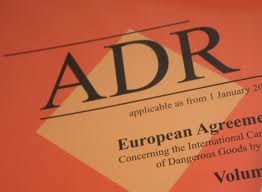Historical background of ADR:
ADR is nothing new. This informal quasi judiciary system is as old civilization. Different forms of ADR have been in existence for thousands of years. The firm Arbitration (a form of ADR) Act was passedin 1698 under William III. This was an Act for rendering the award of arbitrators more effectual in all cases for the final determination of controversies referred to them by merchants and traders, or others. In 1854, Common Law Procedure Art expressly empowered courts to remit an award for reconsideration by the arbitrators. It aim empowered courts to stay (stop) an action in court if the parties had agreed m take the dispute to arbitration. Effectively, the Arbitration Act 1440 gifted a number of modem steps to be taken to agree disputes between the parties: the parties appoint arbitrators court may also appoint arbitrators if the parties fail to do so; decide the disputes informally, make an award, or settle the dispute by mediation, compromise or any other mama; court pass a decree in tams of the award d found the decision was made properly, and Arbitration Tribunal shall be competent m appoint expert or legal advisor to submit report to at an specified question or assessor for assisting it on technical matters.
Later in Arbitration Act 1950, there was a consolidation of the Arbitration Aces 1889 and 1934. It included the power of a court to stay actions where there was an applicable arbitration agreement. In addition the Arbitration An 1975 gave effect to the New York Convention on the Recognition and Enforcement of Foreign Arbitral Awards.
In 1976 Professor frank Sander said in his book Varieties of Dispute Processing’, in future, not simply a courthouse but a dispute resolution centre or a multi-door courthouse where disputants would be screened and channeled m a variety of dispute resolution processes such an mediation, arbitration, fact-finding malpractice screening panel, superior court, or an ombudsman.
In 1976 in Bangladesh, Gram Adalat law was passed under the auspices of Union Parishad to settle minor criminal and civil law suits. The law house bestowed an UP Chairman or Gram Adalat Chairman with power of a third claw magistrate. The court is comprised of 5 members including the Chairman, 2 General members and 2 members selected by the complainant and defender. The judgment of the court will be validated with unanimous support or by majority of 4:1. No one cam, raise any question regarding the legality o[ the verdict.
The Arbitration Act 1979 dealt principally with regulating the courts’ powers to review arbitration awards and to determine any question of law arising in the course of arbitration.
In 1980, the then Government of Bangladesh had passed a bill for introducing the office of an ombudsman to meet a constitutional binding; following the same last year, the Government has adopted a policy of introducing ombudsman sector-wise and has already set up a Tax Ombudsman.
In 1981, considering expenses and delays in disposal of cases through the legal system of India. a judgment was made by the Supreme Court of India in the case ‘Guru Nanak Foundation vs. We Rattan Singh & Sons, AIR 1481 SC 2075′ saying, Interminable, time-consuming, complex and expensive court procedures impelled jurists to search for an alternative forum, leas formal, more effective and seedy for resolution of disputes avoiding procedural claptrap and this led them to …’
In 1982, Richard Abel summarizes the political ambiguity that imbues the history of ADR in The Politics of Informal Justice’: Yet if the goals of informal justice arc contradictory, and if it is incapable of realizing them because of contradictions inherent in advanced capitalism, in formalism should not simplistically be repudiated as merely an evil to be resisted, or be dismissed as a marginal phenomenon that can safely be ignored. It is advocated by reformers and embraced by disputants precisely because it expresses values that deservedly elicit broad allegiance: the preference for harmony over conflict, for mechanisms that offer equal access to the many rather than unequal privilege to the few, that operate quickly and cheaply, that permit all citizens to participate in decision making rather than limiting authority to “Professionals; that are familiar rather than esoteric, and that strive for and achieve substantive justice rather than frustrating it in the name of form.
In 1982, Former Chief Justice W. Burger of the United States Supreme Court asked, Is not there a Better Way? In the annual report on the stale of the judiciary to the American Bar Association. Chief Justice Burger’s plea to the legal profession to consider their traditional role as healers of human conflict and utilize more fully the negotiation and arbitration processes followed on the heels of various initiatives in the United States examining alternatives to court adjudication.
The Characteristics of ADR Approaches:
Although the characteristics of negotiated settlement, conciliation, mediation, arbitration, and other forms of community justice vary, all share a few common elements of distinction from the formal judicial structure. Them elements permit them to address development objectives in a manner different from judicial system&
1) Informality
Most fundamentally, ADR processes are less formal than judicial processes. In most cases, the rules of procedure are, flexible, without formal pleadings, extensive written documentation, or rules of evidence. This informality is appealing and important for increasing access to dispute resolution for parts of the population who may be intimidated by or unable to participate in more formal systems It is also important for reducing the delay and cost of dispute resolution. Most systems operate without formal representation.
2) Application of Equity
Equally important ADR programs are instruments for the application of equity rather than the rule of law. Each caw is decided by a third party, Or negotiated between disputants themselves, based on principles and terms that seem equitable in the particular case, rather than on uniformly applied legal standards. ADR systems cannot be expected to establish legal precedent or implement changes in legal and social norms. ADR systems tend to achieve efficient settlements at the expense of consistent mid uniform justice.
In societies where large pails of the population do not receive any real measure of justice under the formal legal system, the drawbacks of an informal approach to justice may not cause significant concern. Furthermore, the overall system of justice can mitigate the problems by ensuring that disputants have recourse to formal legal protections if the result of the informal system is unfair, and by monitoring the outcomes of the informal system to test for consistency and fairness.
3) Direct Participation and Communication between Disputants
Other characteristics of ADR systems include mote direct participation by the disputants in the process and in designing settlements, mom direct dialogue and opportunity for reconciliation between disputants, potentially higher levels of confidentiality since public records are not typically kept, more flexibility in designing creative settlements, less power to subpoena information, and leas direct power of enforcement.
The impact of these characteristics is not clear, even in the United States where ADR systems have been used and studied mom extensively than in most developing countries, many argue, however, that compliance and satisfaction with negotiated and mediated settlements exceed those measures for court-ordered decisions. The participation of disputants in the settlement decision, the opportunity for reconciliation, and the flexibility in settlement design went to be important factors in the higher reported rates of compliance and satisfaction.
Mechanisms of ADR
Negotiation, mediation and arbitration arc the most common features of ADR techniques in Bangladesh. Let discuss the three important ways of dispute resolution.
Negotiation
Negotiation is the process whereby the parties within the dispute Beck to settle or resolve the dispute. The negotiation process provides the parties or disputants and opportunity to exchange ideas, identity the irritant points of differences, find a solution, and get commitment from each other to reach an agreement. Bargaining is a common feature of the negotiation process. This feature makes it different from mediation and arbitration.
In negotiation, a third part may or may not be involved. When a third party u not involved in the negotiation process, someone usually breaks the ice and brings the parties to the negotiation table and then withdraws from the negotiation process.
Webster’s Dictionary defines negotiation as “mutual decision and arrangement of the terms of a transaction or agreement”. Fisher et al., in Getting to Yea (1991), define negotiation as: “a basic meant of getting what you want from others. It is back and forth communicign: justify”>The problem in legal procedure are-
- Very time consuming
- Requires a lot of money and energy.
- Loss of property
- Complex procedure.
- Win-lose situation
- Sometimes stimulates further conflict
- No reconciliation process.
- Chances of deception
- Dependency on lawyers
- Lack of knowledge in legal Procedure
People Denied access to Justice:
Everyone has a right to access formal state justice. Equal access to justice is one of our most basic rights. However, many people are denied or cannot access the formal system on an equal level with others for reasons including:
- Geographical distance from a court;
- Costs involved in taking a case to court;
- Inability to secure adequate legal representation;
- Backlog in cases at the courts which lead to long delays and thus, time away from home and work;
- Lack of information or exposure to the law;
- Social taboos and stigma surrounding certain crimes and social alienation which results when cases are publicized;
- Trepidation and few of the complexity of the criminal justice system and of its agents;
- Non-availability of translators and lack of communication resulting from langation designed to teach an agreement when you and the other side have some interest that are shared and others that are opposed.”
Goldberg et al., in Dispute Resolution (1992), define negotiation as: communication for the purpose of persuasion.They are many more ways of defining negotiation, but the last definition is a very broad me and is wide in scope: two or more parties communicate for the purpose of influencing the others decision.Negotiation is possible
- where parties must cooperate to meet goals
- parties can influence each other to act in ways that provide mutual benefit or avoidance of harm
- parties ate affected by time constraints
- parties can identify and agree on issues
- interests not entirely incompatible
- external constraints (repute, cost, risk of adversarial decision encourage ADR)
The Negotiation works when:
a) The parties are willing to cooperate and communicate to meet their goals
b) The parties can mutually benefit or avoid harm by influencing each other
c) The parties know that they have time constrain
d) The parties’ realize that any other procedure will not produce desired outcome
e) The parties ran identify on what issues require to be sorted out
f) The parties also agree that their interest am not incompatible to each other
g) The patties knew that it is preferable to participate in private cooperative process rather than go through severe external constraints like loss of reputation, excessive cost, and possibility of adversarial decision
Mediation:
Mediation is in simply anextension of the negotiation process. Mediation involves an independent third party helping disputing parties to resolve their dispute. The disgusts not the mediator decide the terms of the agreement. Mediators me individuals experienced in the negotiation process who bring disputing parties together and make attempts to work out a settlement or agreement that both parties can accept or reject. Mediation is used for a wide gamut of case types, including interpersonal, local business and national issues.
Mediation in generally understood as a third party intervention, between conflicting parties to promote reconciliation, settlement or compromise.
Positive Results of Mediation
The positive aspects of mediation are:
- It helps to identify the true issues of the dispute.
- It resolves some or all of the issues.
- Agreement can be reached on all or part of the issues of the disputes.
- The needs and interests of the parties are met.
- The parties reach an understanding of the true cause of the dispute.
- The parties reach an understanding of each other’s needs and interest.
- It provides the possibility of preserving the relationship.
- An improved relationship may result.
Arbitration[12]:
Next to mediation and negotiation, arbitration is another dispute resolution tool. In arbitration systems, the court authorizes a neutral person or it third party to resolve the dispute at the place of occurrence.
In arbitration an independent, impartial thud party hears both sides in a dispute and makes a decision to resolve it. In most came, the arbitrator’s decision is legally binding on both sides, so it is not possible to go to court if you are unhappy with the decision.
Arbitration is in many ways an alternative form of court with procedural rules which govern issues such sit disclosure of documents and evidence. But arbitration is private rather than public. Hearings am less formal than court hearings, and mine forms of arbitration do not involve hearings but are decided on the basis of documents only.
Adjudication involves an independent third party considering the claims of both sides and making a decision. The adjudicator is usually an expert in the subject matter in dispute. Adjudicators ate not bound by the rules of litigation or arbitration. Their decisions an often interim ones, they can be finalized using arbitration or another process. Adjudication decisions are usually binding on both parties by prior agreement.
Adjudication is also sometimes used to describe a non-specific alternative dispute resolution process in which a third party makes a decision as to the beat way resolve the dispute. In this sense, ombudsmen, arbitrators and judge are all types of adjudicators.
Necessity of Alternative Dispute Resolution (ADR):
The ADR system is yet to be familiarized among the judges and lawyers and in particular among the disputants and litigants in Bangladesh. The reasons, why disputants should consider ADR, are described by Dr Belal Hussain Joy in his book. Law Management Skills (2005)’as:
- gives a wider range of settlement solution comparing with formal litigations;
- Makes substantial contribution to a mom efficient use of judicial resources;
- Saves time arid money both, of both the parties,
- Saves judicial time, accelerating the disposal of and reducing the backlog of Cases;
- Preserves the trial court’s statutory Authority and jurisdiction to try the case should ADR fail
- ADR is non-binding, the arbitrators or mediators take on the rate of investigator as well as impartial judge;
- ADR proceedings are confidential, and not Admissible At the litigation.
ADR procedure can support not only the legal objectives, but also support other development objectives, such as economic and social objectives, by facilitating the resolution of disputes that are impeding progress of these objectives.
- Win-Win outcome
- Cost effective or no cost at all
- Requires less time
- Indigenous style
- Creates social binding
- Reconciliation between disputants
- Positive outcome helps build confidence in the community
- Positive outcome encourage others to resolve disputes in the community
Conclusion:
Every one has right to access formal state justice. Equal access to justice is one of our most basic rights. However, many people are denied or cannot access the formal system on an equal level with others for some reasons. Dispute resolution is a process that implies the causes of conflict as well as the resolution of such conflicts.
















